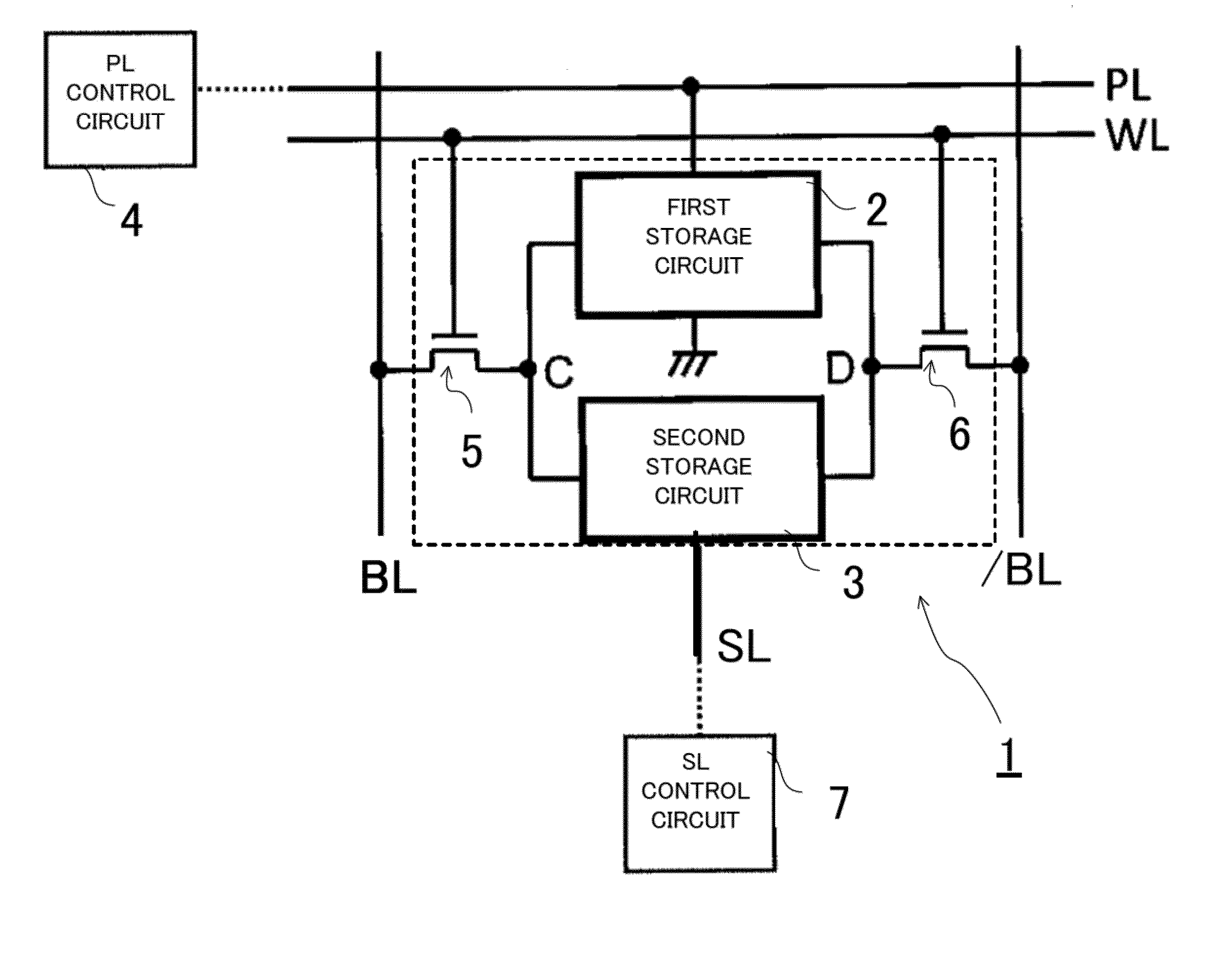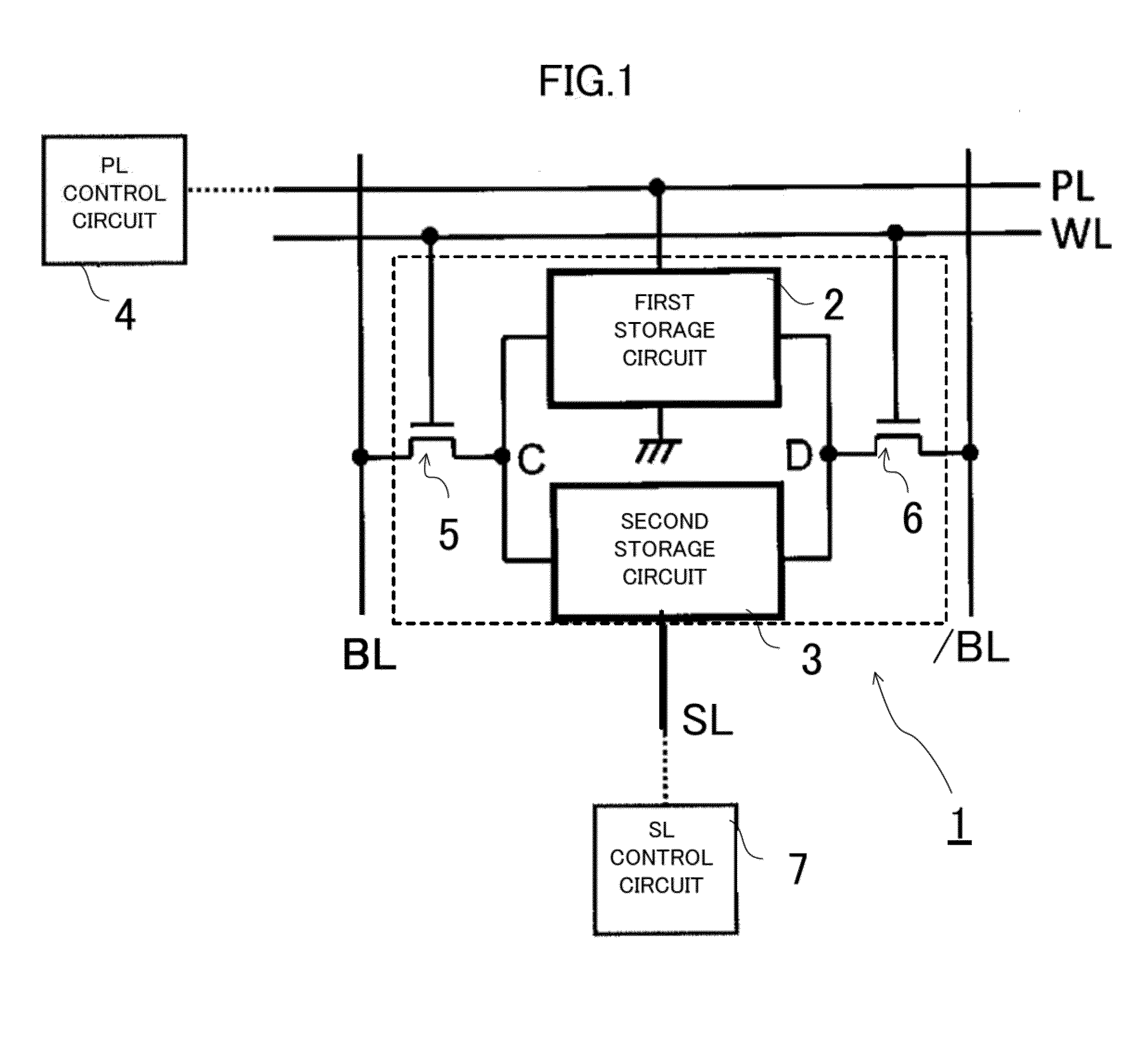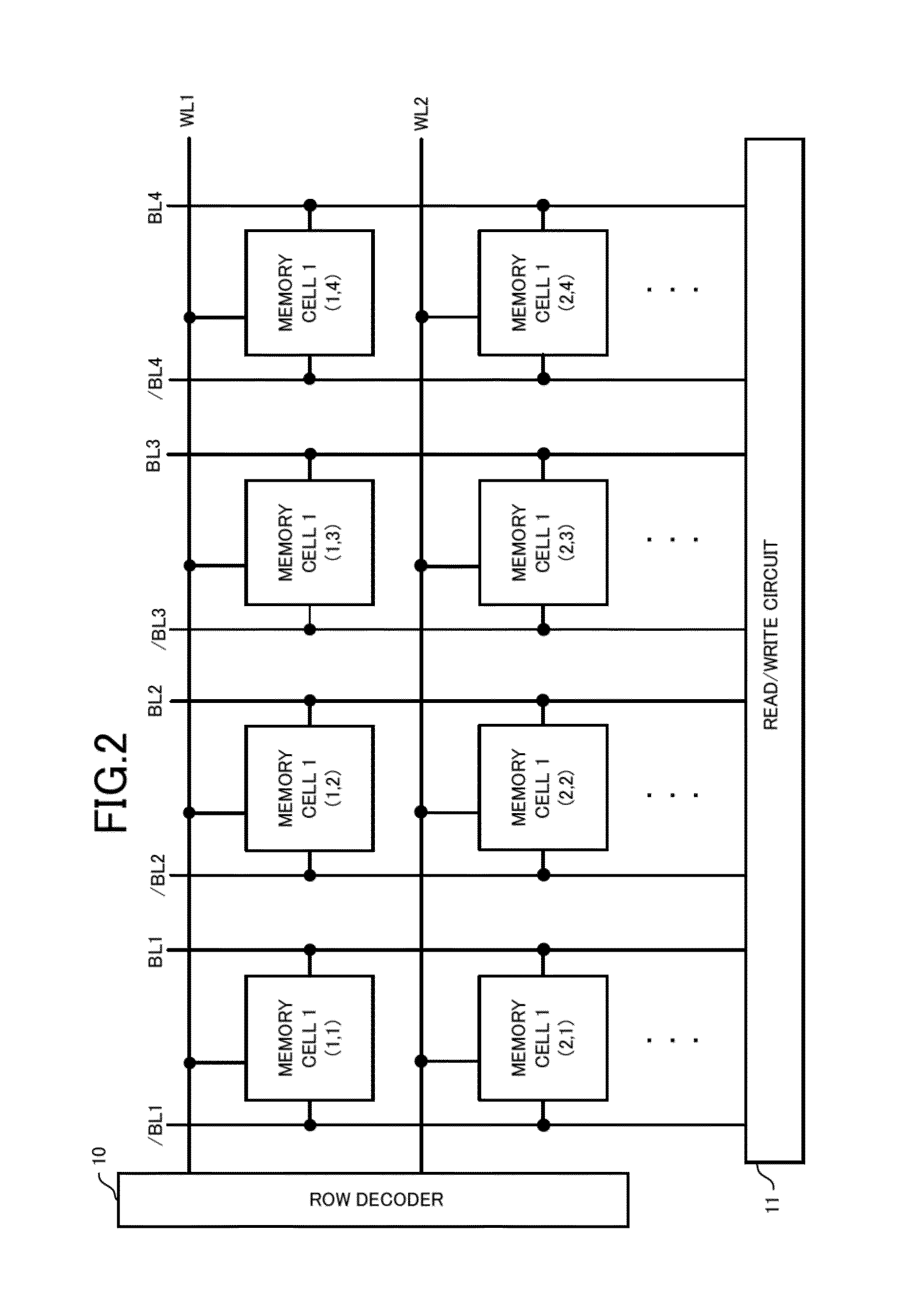Storage device, memory cell, and data writing method
a storage device and memory cell technology, applied in the field of storage devices, memory cells, and data writing methods, can solve the problems of increasing power consumption in these areas, and achieve the effect of high-speed writing
- Summary
- Abstract
- Description
- Claims
- Application Information
AI Technical Summary
Benefits of technology
Problems solved by technology
Method used
Image
Examples
first embodiment
[0090]FIG. 1 illustrates the circuit configuration comprising a memory cell 1 according to a first embodiment of the present disclosure. The memory cell 1 comprises a first storage circuit 2, a second storage circuit 3, a first transfer MOSFET 5 (metal oxide semiconductor field effect transistor), and a second transfer MOSFET 6.
[0091]A time (hereinafter, write time) necessary for writing data on the first storage circuit 2 is t1, and the write time of the second storage circuit 3 is t2. In this case, t12 is satisfied. In other words, data can be written on the first storage circuit 2 at a higher speed than on the second storage circuit 3. A time (hereinafter, data retention time) for which the first storage circuit 2 can retain data is τ1, the data retention time of the second storage circuit 3 is τ2, and τ12 is satisfied. In other words, the second storage circuit 3 can retain data over a longer period than the first storage circuit 2. For example, the first storage circuit 2 may b...
second embodiment
[0118]An example of a storage device in which the memory cell 1 mentioned above is used will be explained below.
[0119]In the storage device 20 according to a second embodiment, the memory cell 1 according to the first embodiment is used. The storage device 20 carries out power gating for supplying power to memory cells 1 on the basis of a group (hereinafter, grain) including the plural memory cells 1 as a unit.
[0120]FIG. 4 is a block diagram illustrating the configuration of a grain 25 included in the storage device 20. The grain 25 includes 2N memory cells 1 on the same word line (N is an integer). For example, 2N is 16, 32, 64, or the like. The configuration of the memory cell 1 is similar to that of the first embodiment. The reading and writing methods of the memory cell 1 are also similar to those of the first embodiment.
[0121]A PL control circuit 4 is assigned to each grain 25. The PL control circuit 4 and each memory cell 1 are connected to each other via a power line PL. The ...
specific example of first embodiment
[0144]A specific example of the memory cell 1 used in the storage device 20 illustrated in FIG. 4 will be explained below.
[0145]FIG. 11 is a circuit diagram of the specific example of the memory cell 1. FIG. 12 is a timing chart.
[0146]In such a case, the first storage circuit 2 comprises a so-called SRAM, and the second storage circuit comprises MTJ elements 30 and 31.
[0147]The first storage circuit 2 comprises a first inverter 12, a first transfer n-type MOSFET 5 connected to the first inverter 12, a second inverter 14, and a second transfer n-type MOSFET 6 connected to the second inverter 14.
[0148]The first inverter 12 comprises a first p-type MOSFET 16 as a load and a first driving n-type MOSFET 17. The drain of the first driving n-type MOSFET 17 is connected to the drain of the first p-type MOSFET 16, and the source of the first driving n-type MOSFET 17 is grounded. The gate of the first driving n-type MOSFET 17 is connected to one end of the main electrode of the second transfe...
PUM
 Login to View More
Login to View More Abstract
Description
Claims
Application Information
 Login to View More
Login to View More - R&D
- Intellectual Property
- Life Sciences
- Materials
- Tech Scout
- Unparalleled Data Quality
- Higher Quality Content
- 60% Fewer Hallucinations
Browse by: Latest US Patents, China's latest patents, Technical Efficacy Thesaurus, Application Domain, Technology Topic, Popular Technical Reports.
© 2025 PatSnap. All rights reserved.Legal|Privacy policy|Modern Slavery Act Transparency Statement|Sitemap|About US| Contact US: help@patsnap.com



